Dry Fly Fishing and the Dead Drift

By Pudge Kleinkauf
The following is an excerpt from the book “Rookie No More: The Fly Fishing Novice Gets Guidance From A Pro”
Question: How do I achieve the “dead drift” when I’m dry fly fishing?
Answer: Most fly anglers find that fishing dry flies on the surface of the water is one of their favorite ways to fish. Seeing a fish rise up from beneath the water to take our bug imitation is a very exciting part of our sport. Called dry fly fishing, it isn’t one of the easiest of skills to master, however. Achieving the dead drift results from two things: good casting and correct management of the fly on the water.
Dry fly fishing is often referred to as “fooling fish with fur and feathers.” A good imitation of the fish’s food source, placed on the water with an appropriate cast, should result in a fly that looks and drifts on the water like the real thing. That could be an adult mayfly, caddis, or stonefly returning to the water’s surface to lay its eggs, or a bee or ant blown into the water from stream-side vegetation.
While learning to fish dry flies, you need to start by being able to track the fly on the water. Use a very visible fly a size or two larger than you need or a small fly with a bit of white or colored calf tail or poly yarn on its top to provide a focal spot for your eye to key on. Two of the best flies to use while learning to dry-fly fish are the Parachute Adams and the Royal Wulff (tied with white calf-tail wings) in a size #12.
“Find the fly on the surface just as soon as it lands,” I tell my students and clients, “and then never take your eyes off of it as it drifts along.” I also have beginners cast in fairly close to themselves until they train their eye to quickly locate the fly on the water at the end of the leader. As they become better able to judge distance, I have them extend their cast a little farther each time to learn how to spot the fly at greater distances. If you can’t follow your fly on the water, you won’t know how it is drifting.
A well-executed overhead cast is the best cast to help achieve the delicacy and gentleness of a wispy, weightless, imitation bug descending and landing on the water. The fly must land silently, delicately, and naturally. My instructor repeated over and over, “Think flutter, Pudge. The fly should ‘flutter’ to the surface, not slap down on it.” Because I could clearly see the difference between a flutter and a splat, that image worked for me.
Fluttering results from a
Read More »Fly Rod Selection For Bonefishing: Video
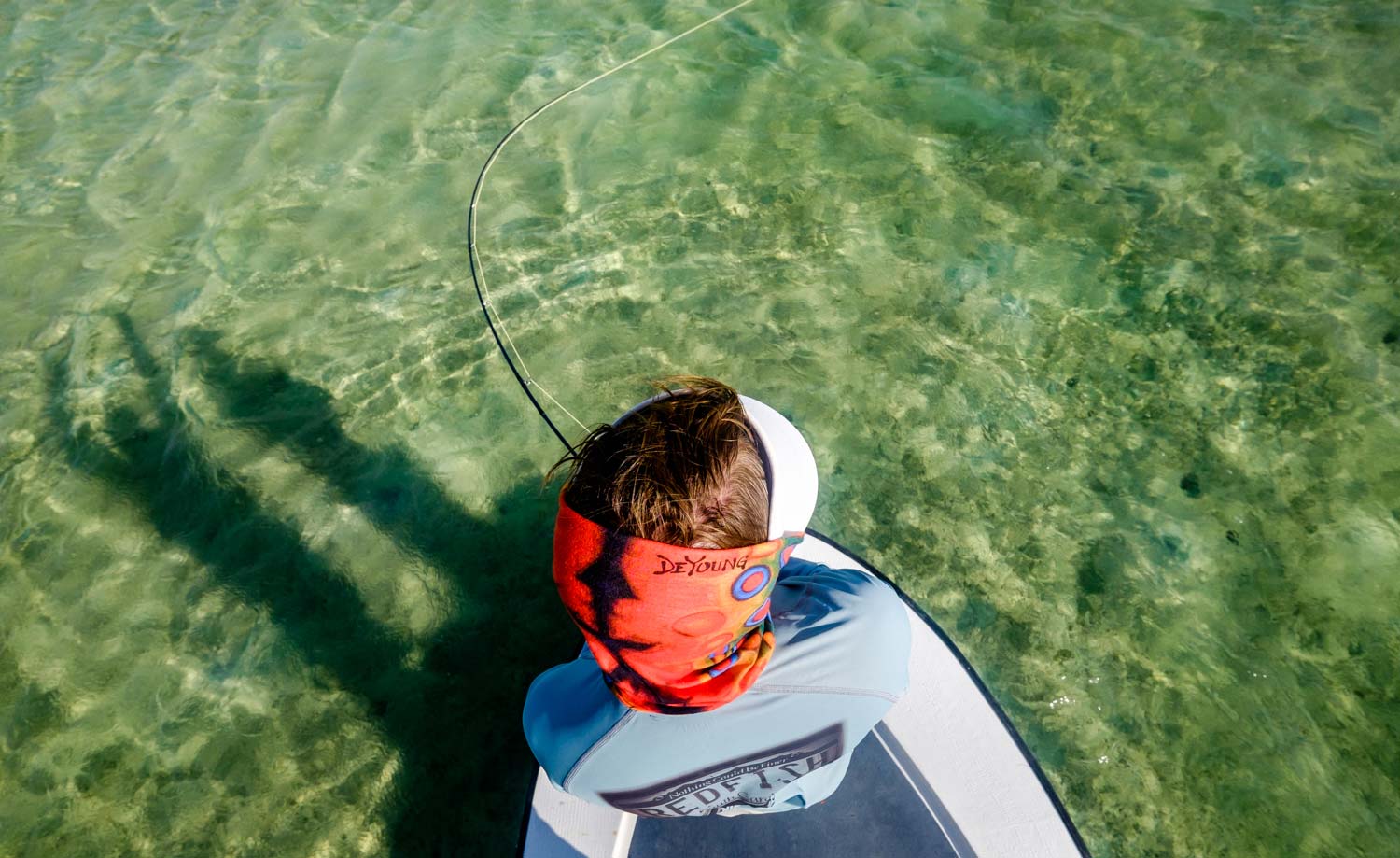
You’ve booked that bid bonefish trip, what fly rods should you take?
Saltwater fly fishing requires he angler to respond quickly to changing conditions. Having the right gear makes a huge difference. The problem is, if you don’t have a lot of experience, you may not know what is going to work when the fishing gets tough. In this video, I’ll try to help you sort through it.
The big factor in saltwater fly fishing is wind. Either too much or too little of it. A lot of beginning saltwater anglers want to fish on dead calm days. Believe it or not, it’s just as tough to have too little wind as too much. Bonefish can get really spooky when the water is flat calm and the setup you love in the wind may not produce.
“Which rods should I take,” is the question I get all the time.
In my opinion, the fly line is an even more important choice. How the rod and line work together to present the fly is what’s really important. I start by choosing the line I want to fish, then I choose the rod I like to cast it. I find I can carry fewer fly rods and catch more fish.
WATCH THE VIDEO AND LEARN ABOUT FLY ROD SELECTION FOR BONEFISHING.
Read More »Should You Be Sharpening Your Hooks More?
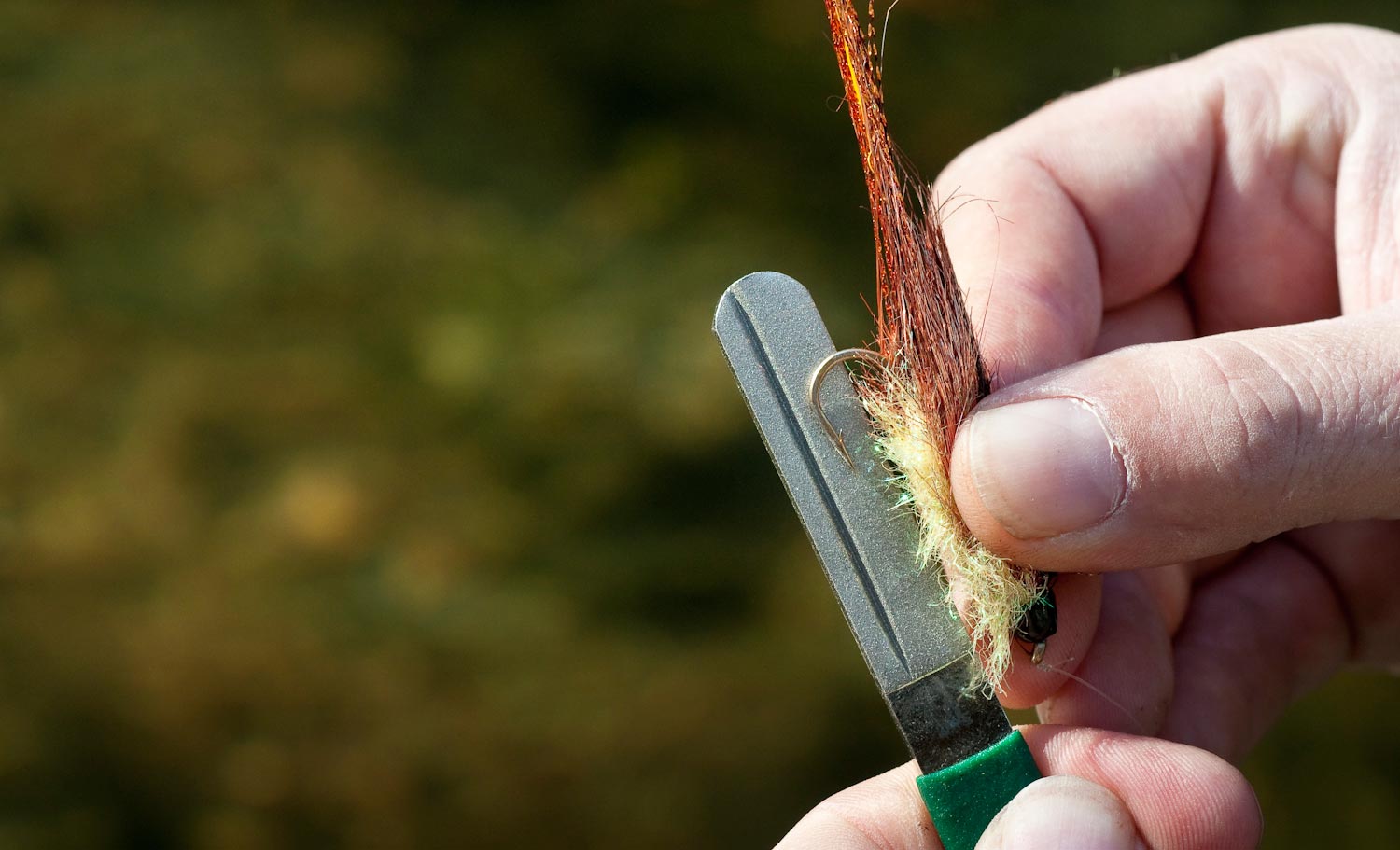
Casting all day long, searching for that beast of a brown. I’m giving it everything I’ve got. I know that’s what it’s going to take if I want a decent shot at landing a big mature brown trout. I’m looking for a 20 plus-incher and they never come easy. And where I live, you’re lucky to get a few opportunities at legitimate wild brown trout of this caliber all year long. We’re approaching a bend that’s known for holding butter slabs and I present a perfect cast right against the deep undercut bank. The retrieve begins, strip strip, pause…, strip strip, pause. Without any warning my six-inch articulated sculpin gets slammed and my fly rod just about comes out of my hands. It’s just been devoured by something very big, and I think it’s what I’ve been looking for. I set the hook hard and my rod bends as the fish breaks the surface thrashing violently, shades of butter are spotted. “It’s a brown!” I yell, but two strips and two head shakes later my fly pulls loose and the beast swims away. My prized catch is lost.
Read More »4 Questions You Should Ask Yourself Before Chasing Musky on the Fly
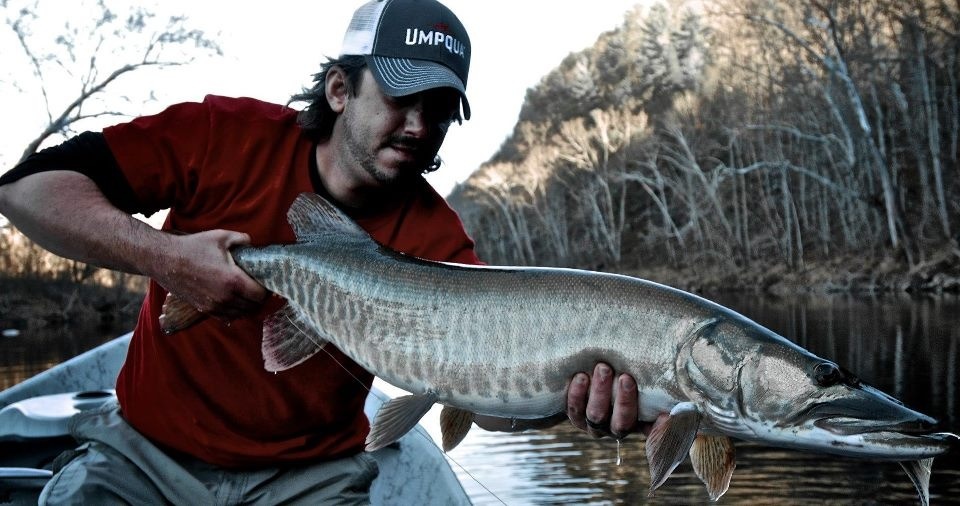
Today’s guest post was provided by Charlie Murphy, a long time member of Gink & Gasoline and musky devotee.
For those of you who don’t know Charlie, he’s as laid back as they come, he eats, sleeps and breaths fishing 365 days a year, and he’s always got your back when you need him. Another thing we love about Charlie is he’s constantly finding ways to add humor into every situation. All these qualities make Charlie a great travel and fishing partner and if you ever have the chance to fish with him, we highly recommend it. That’s enough introduction, read below Charlie’s humorous but true correlation between the old school movie The Karate Kid, the character Mr. Miyagi, and fly fishing for musky.
Read More »The Snap-T Cast With 2-Hand Rod: Video
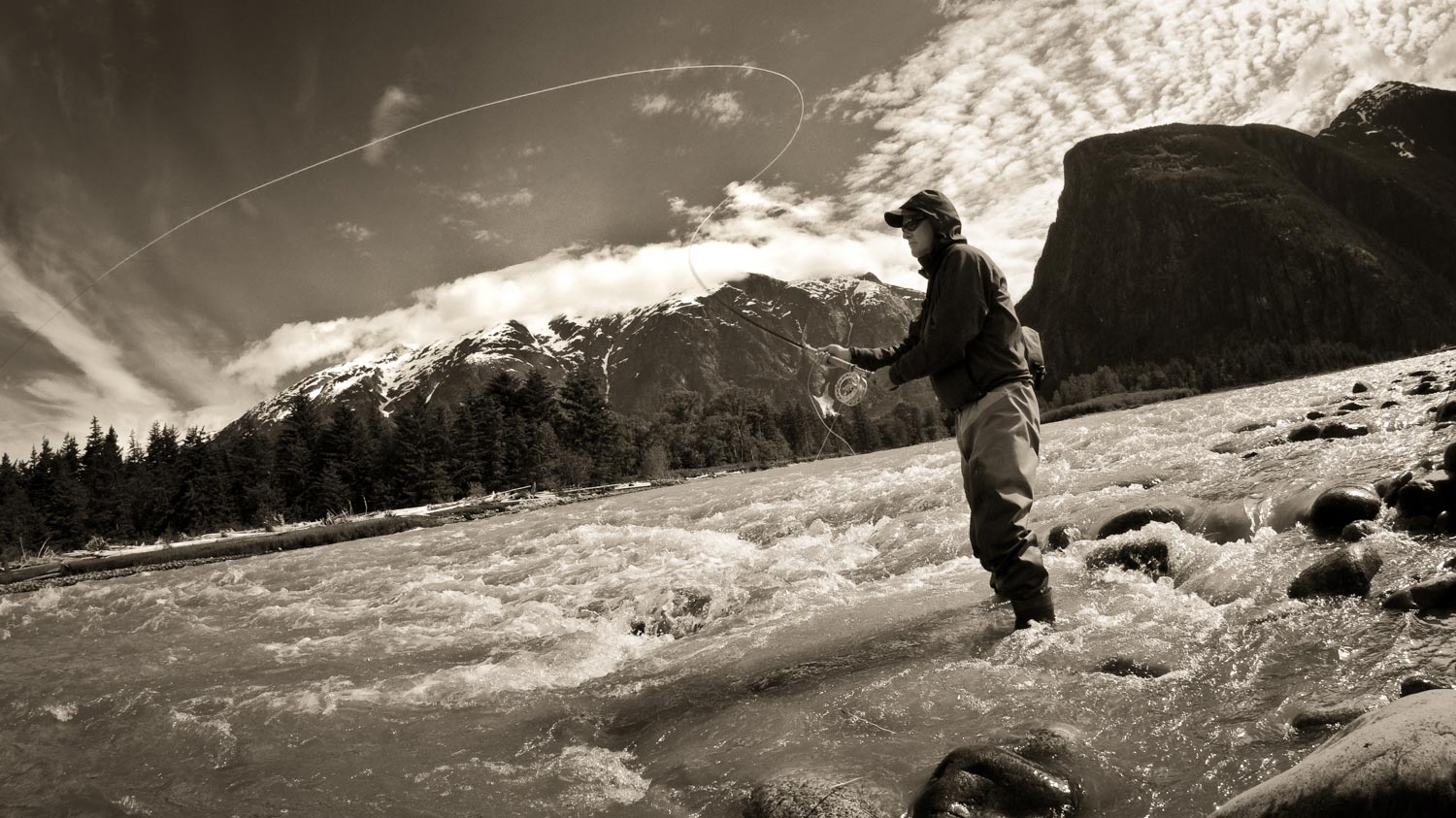
The Snap-T cast is an essential for any 2-hand angler.
You really only need to know a couple of casts to be an effective angler with spey or switch rods. One of the casts you just can’t live without is the Snap-T. This easy and powerful cast lets you launch the fly when the current is off your casting shoulder. It generates the power needed to cast heavy sink tips but works equally as well with light dry lines.
WATCH THIS VIDEO TO LEARN THE SNAP-T CAST FOR 2-HAND RODS.
Read More »You May Be Killing Steelhead And Not Even Know It
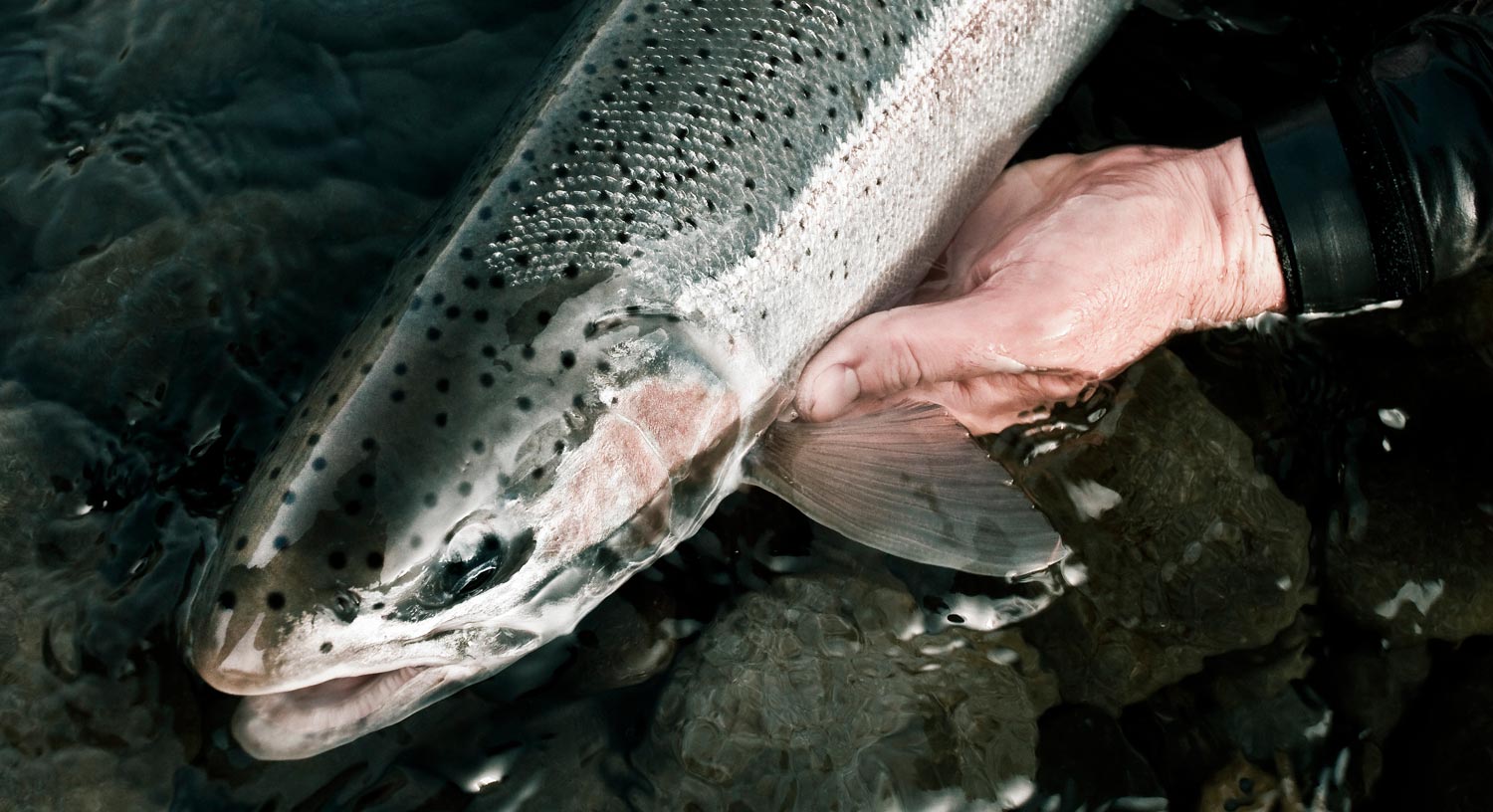
STEELHEADERS ARE GENERALLY PRETTY SERIOUS ABOUT CATCH-AND-RELEASE, BUT IT’S LIKELY THAT MANY ARE MORTALLY WOUNDING FISH WITHOUT EVER KNOWING IT.
There are few species of fish as vulnerable as wild steelhead. These fish are beset on all sides by threats both natural and man-made. With their numbers dwindling, it’s safe to say, every steelhead counts. It’s vital that those of us who fish for them practice the best catch-and-release practices.
However, common landing practices can kill fish without the angler ever knowing. A team of biologists studying steelhead in British Columbia discovered this problem, quite by accident. These scientists were tagging steelhead with GPS trackers. They determined that the least intrusive way to capture the fish was, well, the same way we do it. With a fly rod. They landed the fish, tagged them with the GPS device and released them. When they went to their computer to track the fish’s progress they discovered something alarming.
Within two hours many of the fish they had tagged, and released in good health, were dead. They collected the fish and performed autopsies to determine what had gone wrong. In every case the cause of death was
Read More »Surviving The Worst In Cold Weather
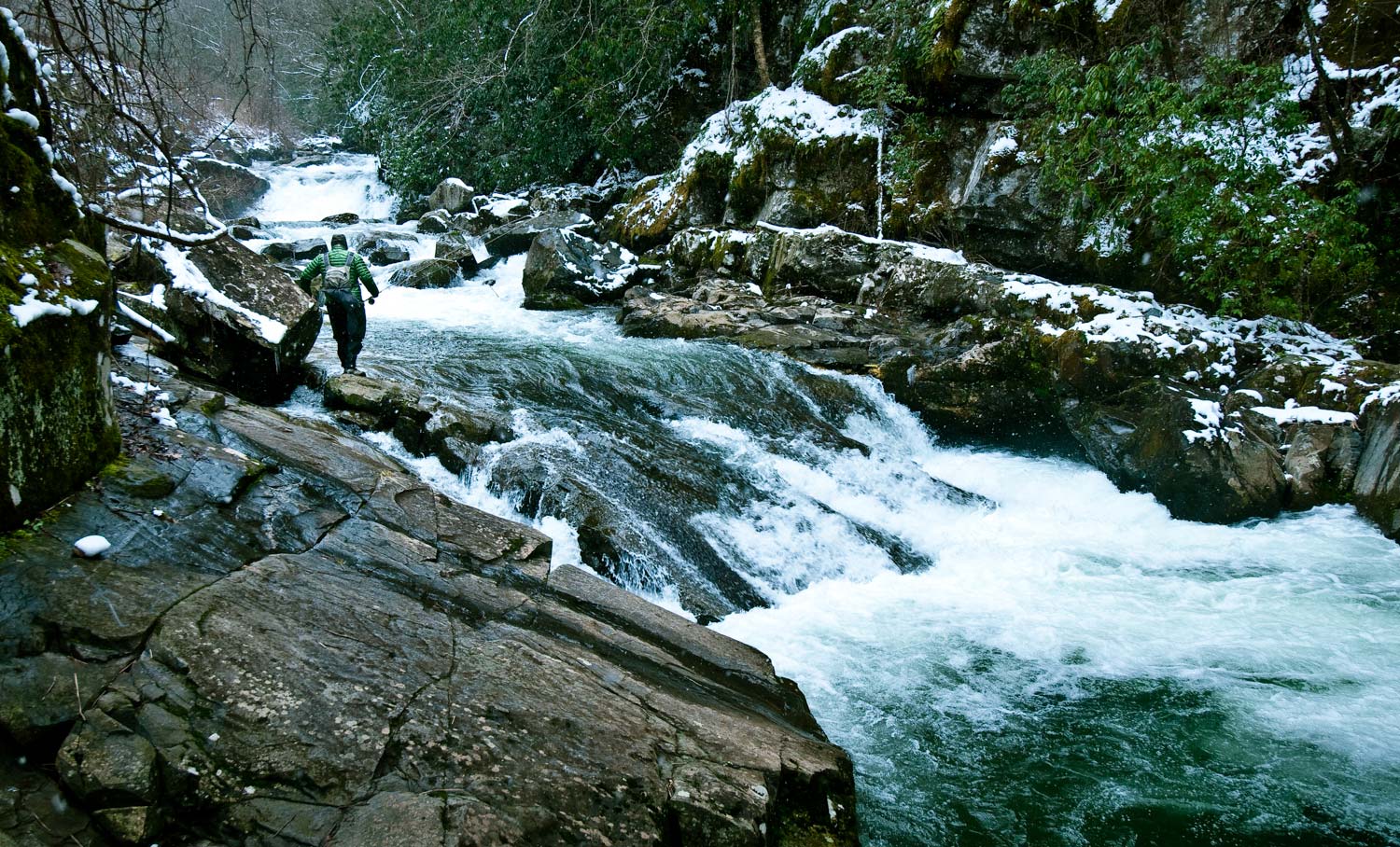
With brutal cold weather pounding much of the trout water in the US, it’s worth taking a minute to think about safety.
Living in the south, life threatening cold weather conditions are not often a concern, but even here in Georgia, you can find yourself in trouble very quickly. In fact, the most dangerous situations are the ones you didn’t expect to go badly, and didn’t prepare. Something as simple as a stone rolling under foot can turn a pleasant winter outing into a survival situation. Some years ago I found myself in exactly that situation.
Fishing a fairly remote spot along the Appalachian Trail one winter, I took a fall and injured my knee. It was bad enough that I couldn’t walk on it. I was miles from the truck and there was no trail. I had about an hour of light. The temperature was about thirty degrees Fahrenheit and falling. I had three options. I could make my way out along the river. It was the longest route and there were some tough crossings. I could hike over a couple of ridges. A shorter route but I was not sure I could find my way, even in the light. Lastly, I could spend the night out in the cold without the first piece of survival gear.
I made a crutch from a forked tree limb and decided to make my way along the river. I fell a couple of more times but I did finally make it to the truck about ten that night. It was the first time I found myself in that kind of spot and it changed the way I thought about planing a fishing trip. I made some good decisions that day, and maybe some bad ones, but I took the time to learn a bit about surviving in cold weather and I recommend that everyone who fishes do the same.
I am a southerner, which makes me apprehensive about giving advice on cold weather. As our best trout fishing is in the winter, I do spend a lot of cold days on the river and I’m not a survival expert but I do take some common sense precautions. With that in mind, here are some tips on staying safe while fishing in cold weather.
Tips for fishing safety in cold weather.
Be prepared
By far the best way to survive a dangerous situation is not to find yourself in one to start with. That means starting with a good plan. You should know what to expect from the weather and be prepared for the worst. Know the area you’re fishing. Know all of your options for getting in and out, both on foot and by vehicle. If for example, you access your spot by driving in on a forest road, it might be smart to
Read More »Reece’s Stepchild Stone
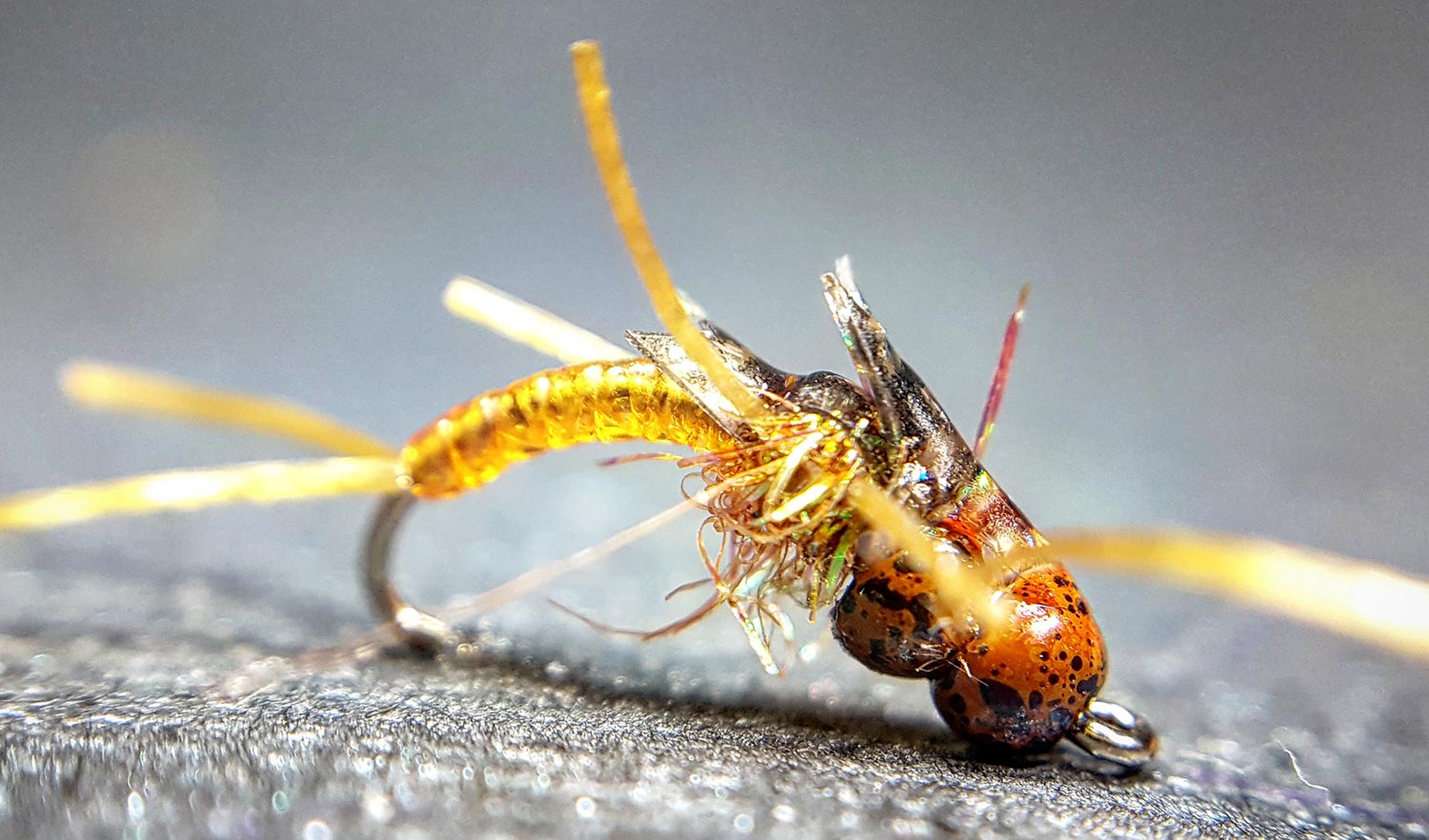
By Bob Reece
The title of stonefly conjures up images of gargantuan aquatic insect life.
This is true for several species in the late reaches of their life. However, their more petite partners and developmental stages should not be overlooked when filling your fly box.
Stonefly nymphs in the smaller sizes of 12-16 are available throughout the year in freestone streams and rivers. This fact led me to create this pattern. The Stepchild is a smaller variation of my Rolling Stone. Its combination of reduced size and mottled beads make it an ideal candidate for clear water conditions. The slim abdomen and double dose of tungsten plummet this bug to the desired depth.
When fishing this pattern, I use it as the anchor point in my nymphing setup. This holds true whether I’m using an indicator rig or tight line set up. The Stepchild Stone also works wonderfully as a dropper in sizes 14 and 16. I always connect it using
Read More »Choosing The Right Color Lens For Your Fishing

Polarized sunglasses are one of the most critical pieces of gear an angler can equip themselves with on the water.
They significantly cut down the glare on the water so you can spot fish and read water more effectively. Without them an angler can feel naked and ill-equipped. Polarized sunglasses play so many important roles in everyday fly fishing, and making a point to choose the right lens color before you hit the river can end up adding or subtracting to your overall success on the water. I carry two different pair of sunglasses with me at all times. Depending on the fishing location, time of day, and available light, I’ll choose one over the other.
Yellow Lens (Low Light Conditions)
Early morning and late evening hours when the sun is low in the horizon and off the water I prefer to wear polarized sunglasses with yellow lens. They increase the contrast and brighten everything a couple notches. I also prefer yellow lens when I’m fishing heavily canopied streams. Sometimes even in the middle of the day, there are many places where the sun doesn’t penetrate the canopy, and you’ll find yellow lens are the only way to go for these shady low light conditions. Nasty weather days when its cloudy and rainy, yellow lens perform well. The winter brings with it limited sunshine on the water, since the sun doesn’t move across the horizon as high, and wearing yellow lens solves this problem. You don’t want to go 100% with a yellow lens for every day fishing though. During high light levels you won’t get the contrast you’ll need, but they do perform extraordinarily well in niche low light situations.
Amber Lens (Moderate to High Light Conditions)
If you only had the luxury to choose one color lens for fishing, there’s no better color choice than amber.
Rigging Tube Flies: Video
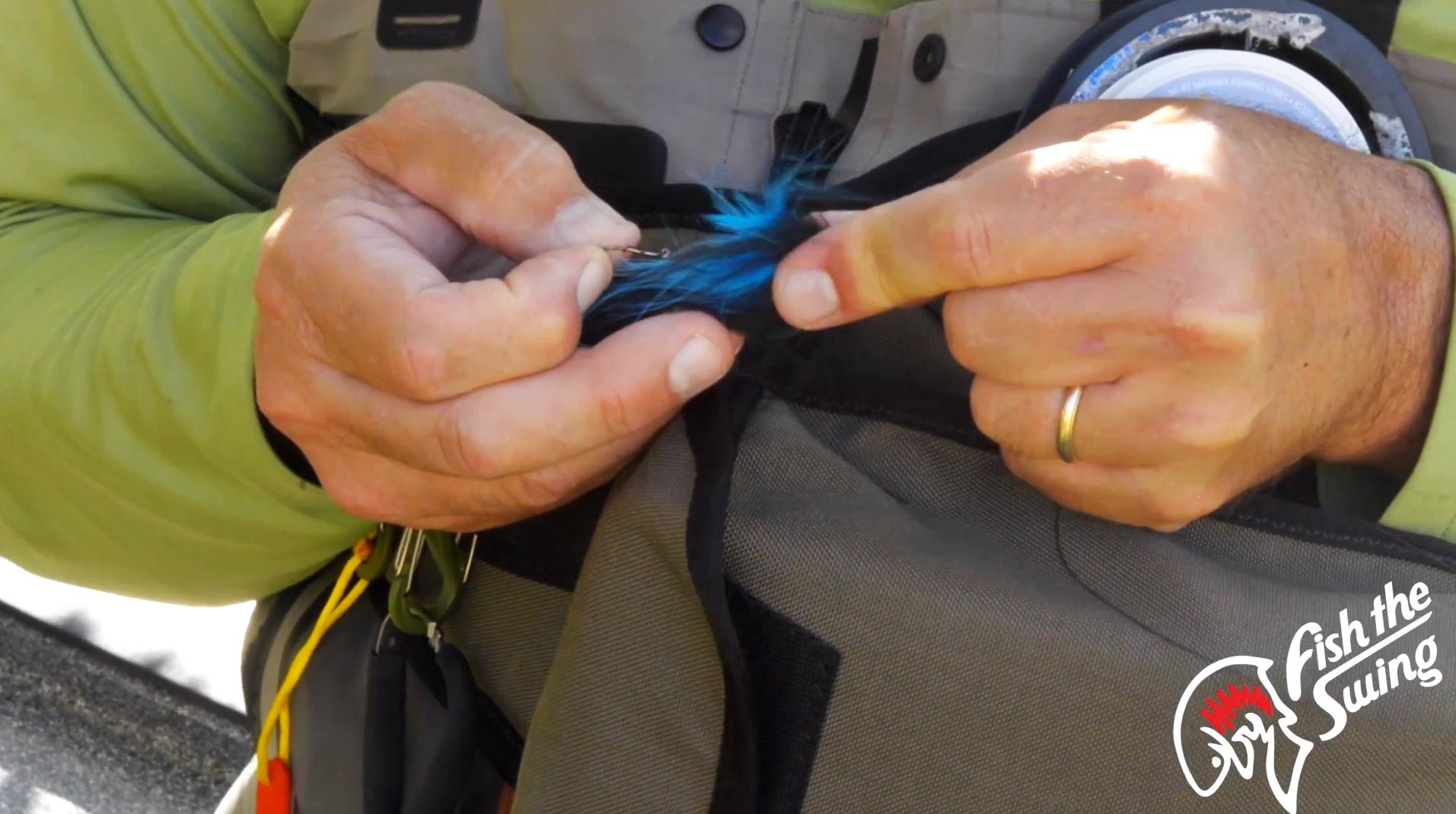
By Louis Cahill I love tube flies and I fish them almost exclusively when I’m after steelhead. Tube flies are a powerful tool. They are the most versatile flies you can tie and the most economical. The secret is that there’s no hook. The fly is tied on a hollow plastic tube, which slides over the leader. The hook is added to the end of the leader. It’s a brilliant system and it’s extremely effective, especially for steelhead. Here are a couple of reasons you should be fishing tube flies. They work The key to the effectiveness of a tube fly is the hook placement. It’s very easy to control the placement of the hook so that, if a fish nips at your fly, the hook is the first thing he gets. They’re affordable The most expensive part of a fly is the hook. You can tie a limitless number of tube flies without using a single hook. On my last steelhead trip I changes flies over a dozen times, but I only used 2 hooks. They’re versatile The coolest thing about tube flies is that they are modular. You can stack tubes on your leader to get the exact size and color combination you’re looking for. You can add cone heads or eyes, tied to small tubes, on the spot. Tube flies let you create the fly for the conditions at the minute. You do need some special equipment to tie tube flies but it’s not expensive. You can get a set of mandrills for as little as $16.99 (HERE) or a dedicated tube fly vice for $130 (HERE), if you like. Either will pay for itself pretty quickly with what you save on hooks. You can tie any fly on a tube, but they have become the gold … Continue reading
Read More »